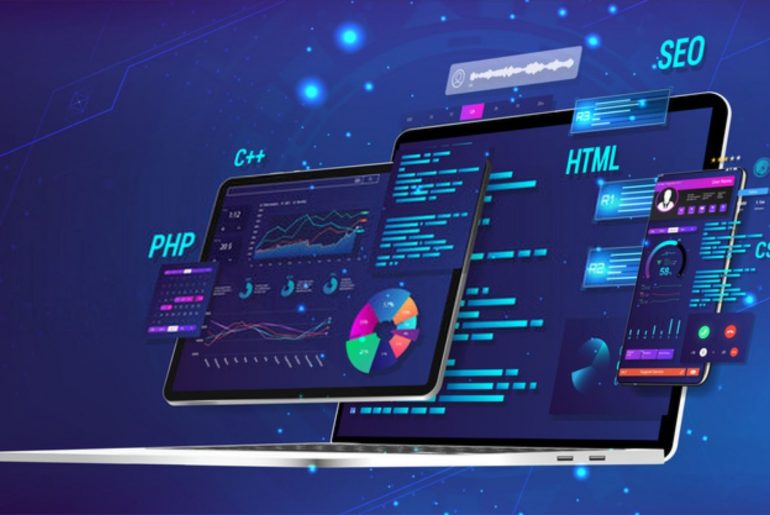A web application is more or less a synonym for a website. Every types of web application have a different purpose than a business can make use of.
On a ground level, it is a website that is designed to give the feel and look of a downloadable application. The main advantage that web applications offer is that they are economical, faster, and easier to build.
Creating a simple, profound strategy along with the right developer can give you the best web applications.
Businesses can get organized, reduce monotonous tasks as well provide an opportunity to grow in unexplored areas with the help of web applications. They function well on a desktop and mobile. From the time Metromindz was set up, different types of Web Application Development have been our forte.
What is a Web Application?
A web application or web app is a software application that runs on a web server. These can be accessed by the user through a web browser with an active internet connection. Commonly used web applications are online stores, webmail, online auctions, and online banking.

Single-page frameworks are used for a mobile platform as it allows you to save bandwidth along with the extinction of loading external files. Increased usage of mobile in recent times has made the developers take note of the ways to target mobile devices when making any type of web application.
The most common structure of a web application consists of three levels. The upper level is the Web Browser that faces the user, the middle level having an engine using one of the web dynamic technologies like ASP, Node.js, PHP, Python among others. The lower level is the database or storage level.
There are different types of Web Application Development Services that are increasing in demand with the advent of technology. Here the role played by the internet is always understated as it is one of the indirect factors that have contributed to this gigantic growth of web application development.
Types of Web Application

There are 10 types of web application that are used frequently.
1. Static Web App
As the name suggests this is more of a static which means fixed. This gives you very little or almost zero space for updates. There’s very little space for content on these kinds of applications.
These are most useful when the information displayed requires no modifications. One among HTML, CSS, Ajax, or jquery is used to develop such static web applications.
Altering the content on a static web app can be tricky. Sometimes to make serious changes, you need to download the entire HTML code, as well as modify and upload it to the server back.
Few of the changes might sometimes be done only by the developer or the company that planned and developed the entire application.
2. Dynamic Web App
This type of web application is something that offers a higher amount of flexibility to the developers in terms of modifications. This needs a fair bit of technical expertise to make the best use of it.
Here the web pages are loaded in real-time only when a user requests them. On a technical note, different languages can be used to develop a dynamic web app.
PHP and ASP are the easiest ones of all as it gets easy to get a hang of how to structure content.
3. E-commerce Web App
The eCommerce industry is estimated to surpass the US in the near future. The rate at which it is growing i.e 27% year on year is the proof. This type of web application requires a little more complex system as it needs to accommodate electronic payments on the applications.
The setup also needs to be more dynamic as frequent updates with regards to products, payments, applications are essential.
The developer has to create an administrative panel for listing new products, updating or deleting them, and managing orders.
4. Portal Web App
On a simpler note, this is a type of web application that gives you instant access to all the numerous categories or subsections through the home page. Few examples of this type of application are forums, chats, browsers, email, etc.
Once a user logs in, the service provider can track their website activity thus providing access to features that are specific only to a certain type of user. This comes in handy when a website wants to target only a specific group of customers.
Anyone among AngularJS, Laravel, React, Node JS can be used to create this type of web application.
5. Animated Web App
To make any web application an Animated web application, compatibility with FLASH technology is a must. This design approach allows you to display animated content.
The biggest advantage that this type of web application has is that it can hold a user’s attention for a longer time. On a technical level as well, it’s a bit complex to design such applications.
6. Web Applications With a CMS
CMS stands for Content Management System. This is software that helps users to create, modify, edit and manage content on a website.
Web application with CMS becomes necessary only if you’re planning to have the entire application under the process of constant development. This type of web application is most common in Personal Blogs, Media, News, Corporate Blogs, etc.
WordPress, Joomla, Drupal are a few of the famous content management systems used in the world.
7. Single-Page App
Single Page Applications allow clients to directly connect with the web page without any interference. Moreover, SPAs are faster when compared to any other type of web application as they apply logic on the internet browser than on the server.
They are very easy to develop, debug and deploy which makes them smooth and efficient. Single-page applications offer the flexibility to be structured in any way as per the requirements.
Social networks, e-mail services, online video/audio players can make the best use of SPAs and their agility.
Trello, used for assigning tasks, is also a single-page application.
8. Multi-Page App
Multi-Page Applications are very similar to conventional web applications. The only difference being that they reload and display the new one when the user interacts with the web app.
These offer a better ranking capability as they follow SEO guidelines and every single page is optimized for keywords. High scalability along with no page limits and a higher load of information about products or services makes it the best-recognized type of web application.
One disadvantage is that the time required to develop MPAs is more compared to SPAs and is hard to maintain and update.
9. Rich Internet Application
RIAs are faster, more engaging with enhanced data communication. They give an eye-catching user experience and high perceptiveness just like the customary program applications. They can be used offline as well.
Inconveniences and Susceptibility are the biggest issues with this specific type of web application.
Adobe Flash, Microsoft Silverlight, JavaFX are a few of the skills needed to develop this type of web application. Google and YouTube are the best examples of Rich Internet Applications.
10. Progressive Web Apps
These are one of the most technically sound forms of web applications that look very similar to a mobile application. PWAs are built with all the characteristics that have the power to enrich the performance and improve the mobile compatibility of the application.
The main agenda of the Progressive Web Applications is not about using new rules in structure but more about improving the speed and providing flexibility to web applications despite gradual/bad internet connections.
OLX, Starbucks, MakeMyTrip make use of this type of web application to serve their customers in the best possible way.
9 Steps To Get Your Web Application Development Process Right

Step 1 – You need to have an original app idea
Step 2 – Do Complete market and competitor research
Step 3 – Specify your Application’s functionality
Step 4 – Create a basic draft of your web app design
Step 5 – Have proper wireframes and prototypes
Step 6 – Begin To Validate Your Idea
Step 7 – Choose your Technology
Step 8 – Time to host your web application on the web
Step 9 – Get your application live
OR THE EASIEST WAY IS:
You can simply Contact Us and we will do the rest for you! 🙂
Closing Thoughts
On the whole, getting a web application ready for your business is the first step to getting your business online. It becomes your ONLINE SALES PERSON as it will keep promoting your brand 24/7.
There’s no single type of application that’s specific to a certain type of business.
By now we are sure you have an idea as to what each type of web application is. Selecting the right one is up to you. If not, we’re always here to help you out.






